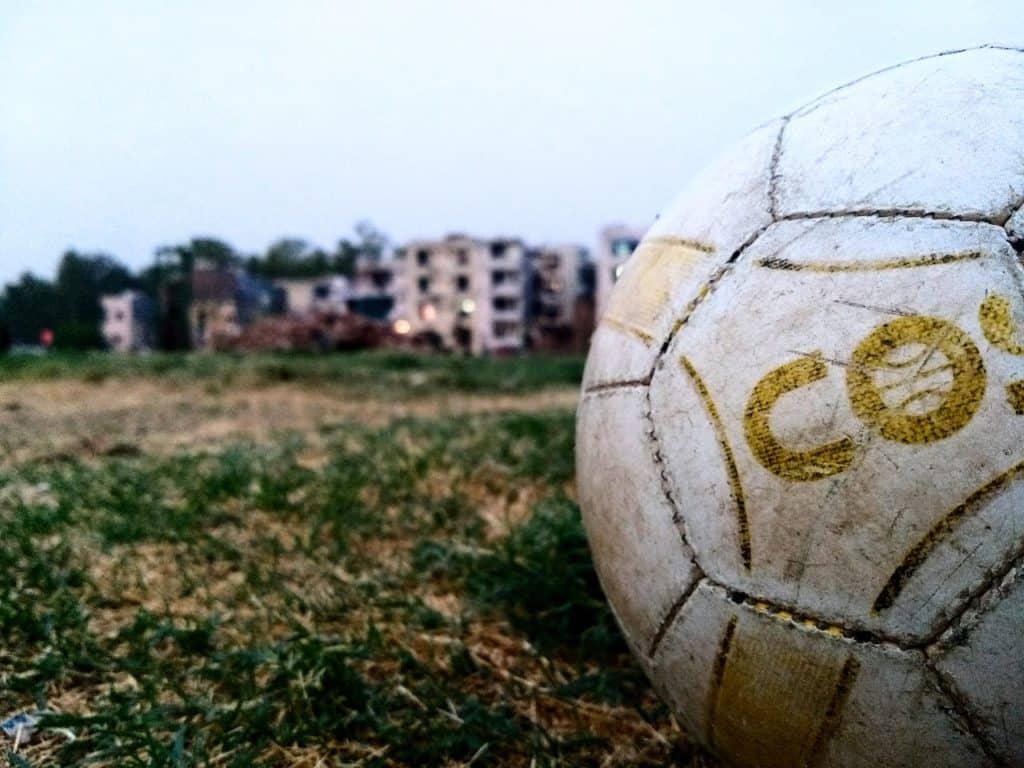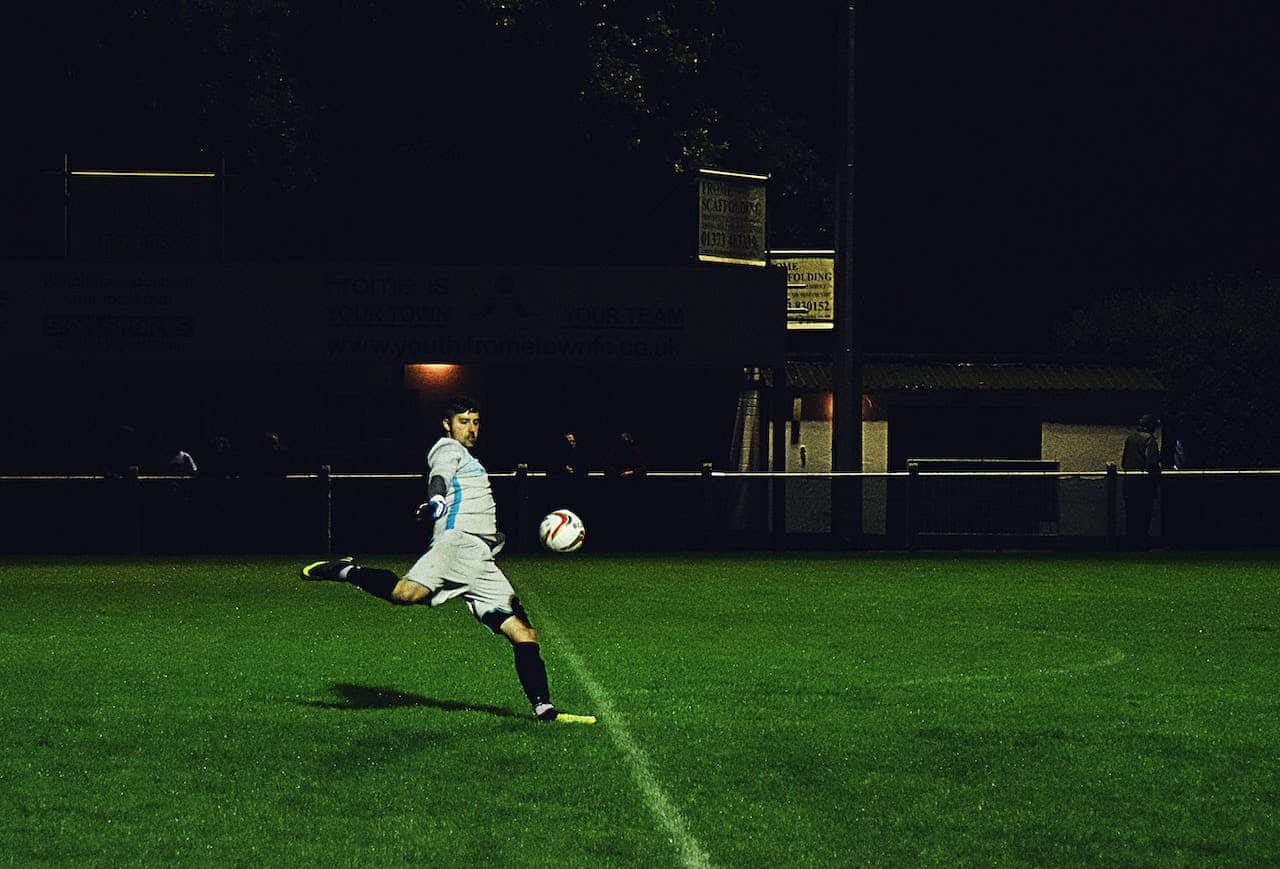Soccer, globally known as football, is a sport that blends endurance, agility and speed. One of the most significant factors that contribute to a player’s success on the field is their ability to maintain high levels of speed, which can change the outcome of the game. This article goes in depth about the necessity of speed in soccer, how quickly different types of players should be able to run a mile, and ways to improve sprint speed. Thus, understanding the dynamics of speed could turn the regular soccer enthusiast into an informed, strategic and highly effective player.
Speed is not merely an asset in soccer; it’s a fundamental component that shapes the dynamics of gameplay. The influence of speed pervades every moment on the pitch, from the rapid dashes of attacking players to the swift reflexes required for defensive maneuvers. It is this very speed that can often be the distinguishing factor between a winning side and a losing one. The swift nature of modern soccer means that the pace at which a player operates can have a pivotal influence on how the team performs during crucial moments of the match.
Importance of Speed in different soccer positions
Soccer’s beauty lies in its variety of roles and responsibilities assigned to players on the field. Speed, however, is a universal requirement albeit in different measures. For the likes of forwards and wingers, an explosive tempo is essential. These players thrive on high-velocity sprints, using their rapid pace to create breaches in the opposition’s defense. Contrasting this, midfielders are the engines of the team, requiring not only speed but exceptional stamina to support both offensive and defensive plays throughout the match. Defenders and goalkeepers, while not always associated with speed, must exhibit quickness in their reaction times. This agility is crucial for countering the fast-paced attacks launched by their adversaries.
The impact of Speed on a player’s overall performance
A player’s speed can be directly linked to their efficiency on the field. A quicker player can seize opportunities, close down space, and challenge opponents with greater success. Speed, in conjunction with tactical awareness, can elevate a player’s game to new heights. It’s not just about the ability to outrun others; speed enables players to be in the right place at the right time, making strategic plays that can alter the course of the game. Furthermore, a player’s agility and quickness can contribute to their endurance, playing a role in injury prevention and overall longevity in the sport.
Factors Influencing the Running Speed of a Soccer Player
The speed at which a soccer player sprints across the field is impacted by a confluence of factors, some inherent and others that can be honed and improved upon with training and practice.
Fitness Level
At the core of a player’s speed is their level of physical fitness. Muscular strength, limberness, and cardiovascular endurance are the pillars upon which speed is built. Athletes dedicate countless hours to conditioning their bodies to amplify these attributes, understanding that these components are integral to outperforming their counterparts on the field.
Age
While youth often brings natural speed, the challenge comes as players age. A gradual decrease in speed is a natural part of aging, but with a rigorous fitness regimen and strict discipline, players can continue to compete at high speeds well into their careers.

Technique
Running technique is another critical determinant of a player’s speed. Proper form and mechanics can enhance not only a player’s velocity but also their efficiency, conserving energy and reducing the risk of injury during high-intensity sprints.
Position in the game
The tactical role a player serves within their team dictates the specific type of speed required. A defender’s speed profile, for instance, will differ markedly from that of a forward, with each position demanding variations in quickness, acceleration, and agility.
How Fast Should a Soccer Player Run a Mile?
The mile run is a traditional assessment of a soccer player’s fitness and speed. This benchmark exercise offers insights into their endurance capabilities and their capacity to sustain effort over the duration of a game.
Average speed for Professional Soccer Players
For professional athletes in soccer, running a mile in under six minutes is a common expectation. This impressive feat reflects the elite endurance and stamina required to compete at the highest echelons of the sport, where matches are often won in the final minutes.
Speed levels for youth and amateur players
In contrast, youth and amateur players should aspire to complete the mile run within six to seven minutes. This standard, while less stringent than that of professionals, still represents a challenging goal. As players develop and refine their skills and fitness, aiming to reduce this time incrementally will help them approximate the physical prowess characteristic of professional athletes.
How speed requirements vary by position
Positional demands for speed in soccer are nuanced. Forwards need to be able to explode past defenders with sheer acceleration, while midfielders must strike a delicate balance between speed and endurance to maintain their role as the team’s central support system. Each position on the soccer field comes with its unique speed requirements, all contributing to the intricate and fast-paced nature of the game.
Ways to Improve Running Speed for Soccer Players
Improving a soccer player’s running speed is a multifaceted endeavor, involving a mix of reflective strategies, targeted training routines, and a commitment to consistent hard work. To effectively enhance their speed on the field, players need to engage in soccer-specific drills, participate in strength and agility training, and consistently perform endurance exercises.
Specific Soccer Drills
Drills tailored specifically for soccer, such as shuttle runs, cone drills, and various sprinting exercises, are instrumental in improving a player’s speed. These drills simulate game-like conditions, allowing players to develop speed in contexts directly relevant to their sport. Shuttle runs enhance rapid directional changes and acceleration, while cone drills improve agility and sprinting exercises build explosive speed.
Incorporating these drills into regular training sessions ensures that players can move quickly and efficiently on the soccer field, adapting their speed and movement to the dynamic nature of the game.
Strength and Agility Training
Strength and agility training is vital for improving a soccer player’s speed. Exercises like squats, deadlifts, lunges, and plyometrics not only increase muscle strength but also enhance the player’s stride length and power. This directly impacts their speed on the field.
Plyometric exercises, which involve explosive movements, are especially beneficial as they improve the muscles’ ability to generate force quickly. This type of training contributes to faster sprints and more powerful jumps, essential components of a soccer player’s skill set.
Importance of Regular Endurance Exercises
Endurance exercises play a critical role in ensuring a soccer player can maintain their speed throughout the duration of a game. Stamina is a key factor in a player’s overall performance. Engaging in cardiovascular exercises such as swimming, cycling, and long-distance running can significantly improve a player’s endurance.
These activities enhance the heart’s efficiency in pumping blood and the muscles’ ability to utilize oxygen, ensuring that players can sustain high levels of performance for longer periods.
Measuring & Tracking Progress on Soccer Running Speed
It’s imperative for soccer players to regularly assess and monitor their speed to track their progress effectively. Using tools like fitness trackers, sports watches, and timed trial runs can provide valuable data on their improvement.
Use of Fitness Trackers and Sports Watches
Fitness trackers and sports watches are excellent tools for monitoring a player’s speed, heart rate, and overall performance during both training and matches. They provide real-time feedback, allowing players and coaches to make informed decisions about training intensity and recovery needs.
Time Trials: Utility Comparison
Conducting timed one-mile runs can serve as a reliable method for tracking a player’s progress. Performing these trials regularly, such as every few weeks, can offer a clear indication of the training regime’s effectiveness, highlighting areas of improvement and where further focus is needed.

Common Mistakes Soccer Players Make While Improving Running Speed
In their pursuit to increase speed, soccer players often encounter several common mistakes.
Overtraining
One significant error is overtraining. Players may push themselves too hard in an effort to improve quickly, leading to fatigue, increased risk of injuries, and a potential decline in overall performance. It’s crucial to find a balance between intense training and adequate rest.
Ignoring Proper Technique
Focusing excessively on speed can sometimes lead players to overlook the importance of maintaining proper technique. Proper running form is essential not only for efficiency and speed but also for reducing the risk of injuries.
Neglecting Rest and Recovery
Another crucial aspect often overlooked is the importance of rest and recovery. Adequate rest is essential for the body to repair and strengthen itself. Neglecting this aspect can lead to diminished speed, reduced overall athletic performance, and a heightened risk of injuries. It’s important for players to incorporate rest days into their training regimen and to pay attention to their body’s signals for rest and recovery.
Conclusion
Speed is crucial to excel in soccer, regardless of the position played. Maintaining a high level of fitness, using correct techniques, and focusing on continual improvement can significantly enhance a player’s speed. Understanding the correlation between speed and performance can positively impact a player’s effectiveness, stamina, and overall worth on the field. Furthermore, avoiding common mistakes ensures sustainable improvement and longevity in the sport.


















